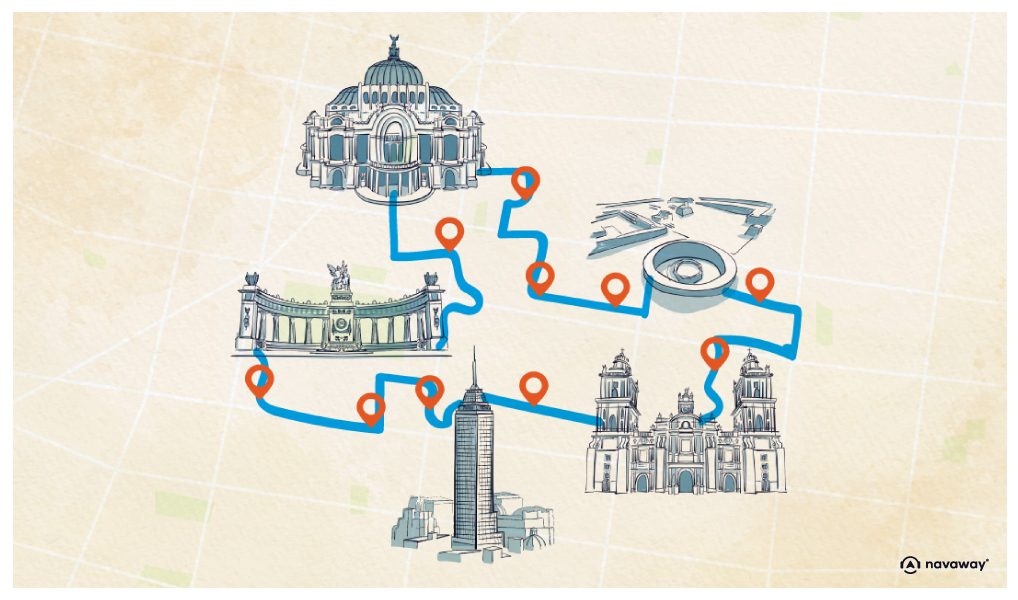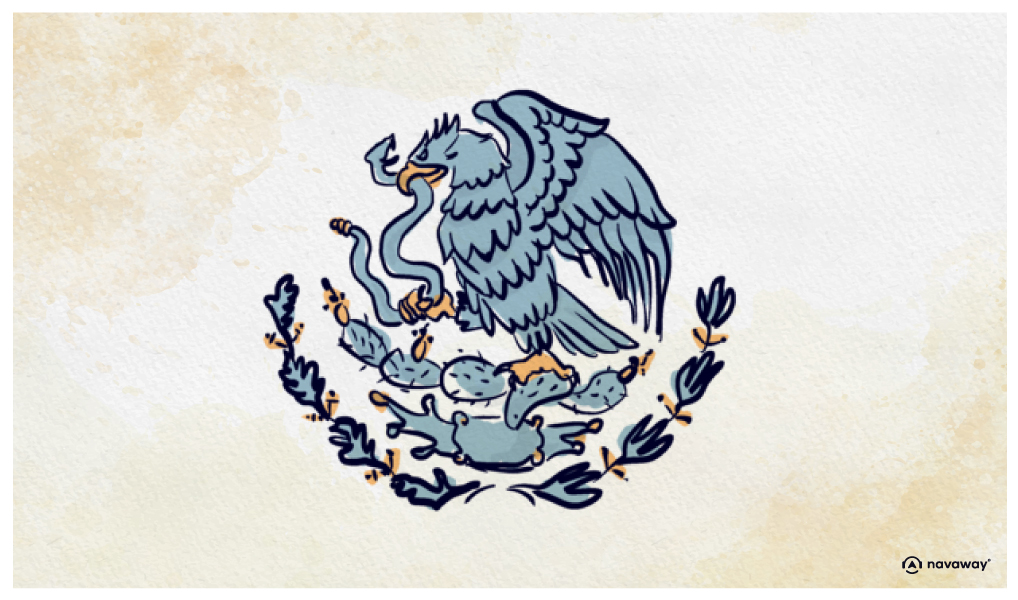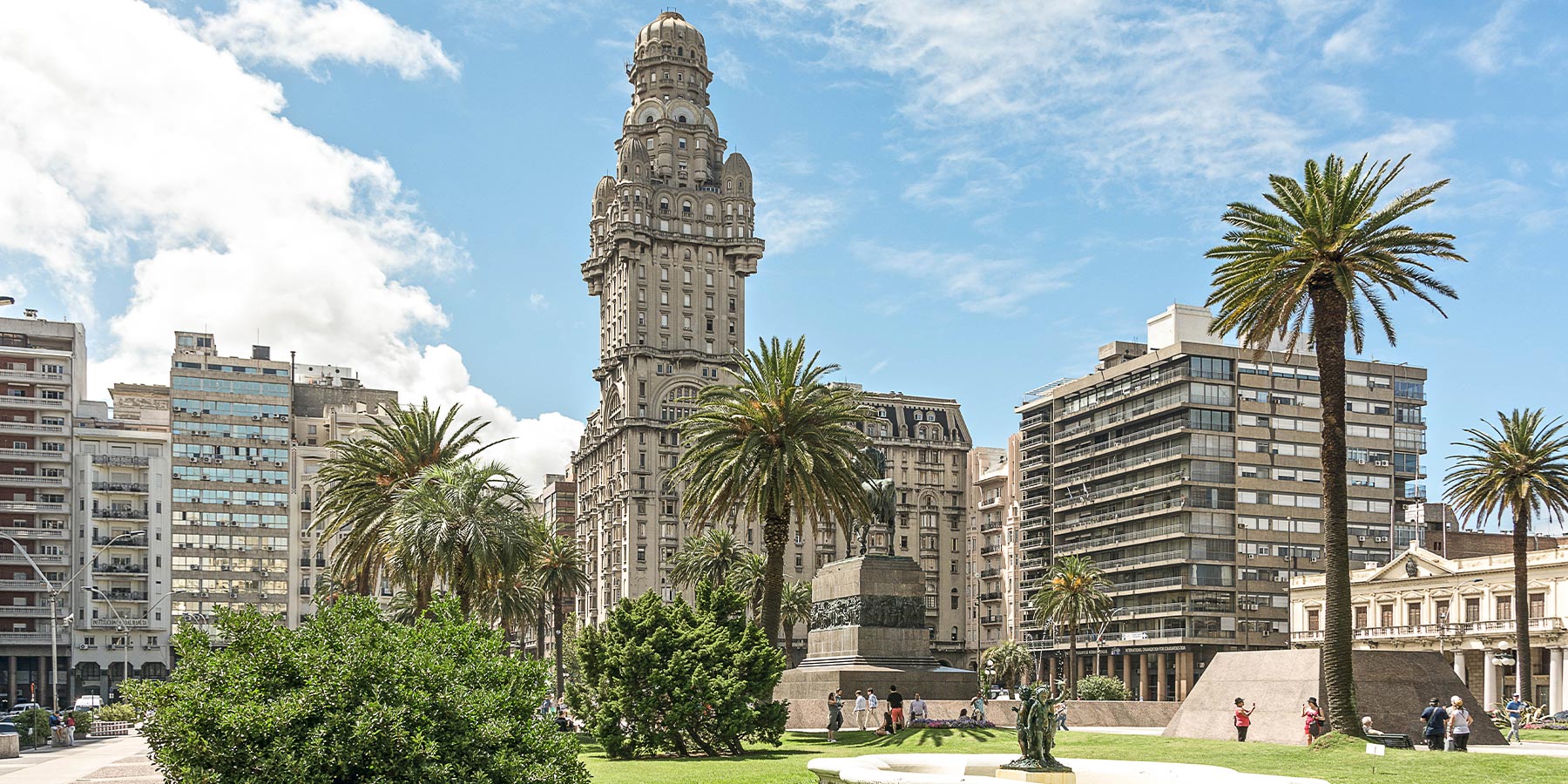
History of Mexico City

This point of interest is available as audio on the tour: Visit Mexico, Retracing the steps of the Aztecs
Let’s take a moment here on Lázaro Cárdenas Avenue to revisit the city’s history. Mexico City, now the capital of Mexico, owes much of its early development to the Aztecs, who set foot in the valley in the 14th century and founded the city of Tenochtitlan around the year 1325. This civilization, famous today, had already existed for centuries as a nomadic population, until they discovered these central Mexican lands and decided to settle here. Why here and not somewhere else? Well, back then, Mexico City was actually a massive waterpoint—Lake Texcoco—with small islands where the Aztecs would grow corn and eventually build temples and homes. When they reached the lake’s shores, they witnessed a scene described by their God of War, where an eagle perched on a Barbary fig was holding a snake in its beak. The Aztecs saw this as their sign to setlle down here. 700 years later, you can still see the eagle and snake in the centre of the Mexican flag—an enduring tribute to a civilization once the most powerful and widespread in pre-Hispanic Mexico. However, the Aztecs soon realised that they weren’t alone in the region. Surrounded by the Tlacopan and Texcoco tribes, they strategically settled in the middle of the lake itself. There, they built artificial islands to grow corn, beans, squash, and made aqueducts to supply fresh water. They chose Tenochtitlan as their capital as they progressively grew into a powerful population, even more so once they formed the Triple Alliance with the Tlacopan and Texcoco. Nothing seemed to stop them, that until the arrival of the Spanish conquistadors in 1519, led by the now-infamous Hernán Cortés. When the expedition landed in Yucatán, locals guided them northward to find the true riches of the territory. Many indigenous groups, tired of Aztec dominance, joined the Spanish army. The colonists set foot in Tenochtitlan on the 8th of November 1519, discovering a great and powerful city stretching out in front of them. At first, Cortés was warmly welcomed by the Aztec emperor, who mistakenly believed that Cortés was a God returned to the city—especially since an old prophecy had foretold the return of a red-haired god from the east, and that was the case for Cortés. However, everything changed when the Spaniards began imposing their own culture and religion. Tensions escalated, then war broke out, and within two years, the Spaniards had taken over the city, executing the last Aztec ruler and marking the fall of the empire, one of the most important in Mexico’s history. The Spanish demolished Tenochtitlan to make way for new buildings, and drained the lake to extend the city. Mexico City grew into becoming the largest city on the continent by 1821—and as we know it today, one of the world’s largest megacities, shaped by Aztec roots still scattered across the region.


Discover Mexico with app
An interactive guide through the most beautiful streets, squares, and districts
24 fun audioguides full of historical facts, anecdotes, and legends





Comments